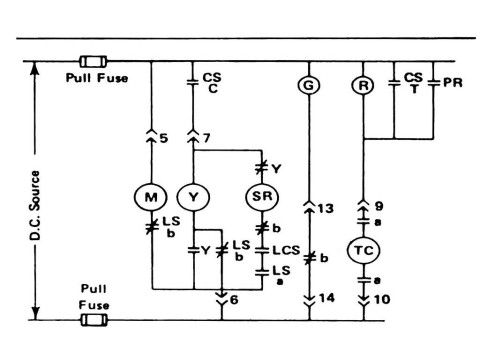Connection Diagrams for Automatic Circuit Breakers: Step-by-Step Guide
Introduction to Connecting Automatic Circuit Breakers
Connecting automatic circuit breakers (ACBs) correctly is crucial for ensuring the safety and reliability of your home's electrical system. Whether you're setting up in a private house, apartment, or cottage, understanding the various connection schemes and configurations is essential. This guide provides detailed connection diagrams and practical advice for installing ACBs in single-phase networks, focusing on typical residential applications.
Connection Schemes for Automatic Circuit Breakers
Automatic circuit breakers can be connected in multiple ways depending on their purpose and the configuration of the electrical network. The primary factor determining the connection method is how the ACB interacts with other devices in the electrical panel, such as:
- Electricity Meter (Счетчик)
- Residual Current Devices (RCDs)
- Other Protection Devices
This section covers connection schemes for private homes and apartments using a single-phase network, highlighting both single-pole and double-pole breaker installations.
1. Single-Pole and Double-Pole Breaker Connections in Single-Phase Networks
Single-Pole Connection: In this configuration (see Figure 1), the breaker interrupts the live (L) wire only. Both the incoming live and neutral (N) wires from the supply side are connected to a common neutral bus in the distribution panel.
Double-Pole Connection: Alternatively, a double-pole breaker (see Figure 2) interrupts both the live (L) and neutral (N) wires. In this setup, only one contact of the ACB is connected to the neutral bus at the supply side.
Recommendation: Typically, the single-pole connection is preferred for protecting the wiring and equipment. This approach is cost-effective and conserves space within the distribution panel. However, double-pole connections eliminate the risk of incorrectly connecting the neutral and live wires, enhancing safety by ensuring that both conductors are disconnected simultaneously.
Installation Tip: It is generally recommended to connect the incoming supply at the top of the panel and the consumers at the bottom. This hierarchical arrangement simplifies the organization and maintenance of the distribution board.
Connecting the Automatic Circuit Breaker to the Electricity Meter
When an electricity meter is present in the distribution panel, there are two primary methods to connect the main breaker:
Before the Meter:
- Advantages: Simplifies maintenance and repairs, allowing safe work on all circuits, including the meter.
- Disadvantages: Increases the risk of unauthorized connections for energy theft. To mitigate this, utility companies may seal or lock the main breaker terminals.
After the Meter:
- Advantages: Prevents unauthorized access since the meter's terminals are typically sealed by the utility company.
- Disadvantages: Requires separate protection for the distribution panel, as the main breaker cannot disconnect the meter.
Recommended Approach: Connecting the main breaker after the meter is generally preferred by utility providers to prevent energy theft. This method ensures that the meter remains secured and tamper-proof.
Connection Schemes in the Distribution Panel
Beyond the main breaker and meter connections, the distribution panel includes various protection devices such as:
- Branch Circuit Breakers: Protect individual circuits for lighting, outlets, and high-power appliances.
- Residual Current Devices (RCDs): Detect and disconnect circuits experiencing current leakage.
- Differential Circuit Breakers (Differential Automats): Combine the functions of branch circuit breakers and RCDs for comprehensive protection.
- Voltage Relays: Protect equipment from voltage fluctuations.
Example Connection Diagram: Refer to Figure 3 for a typical connection scheme of automatic circuit breakers within an electrical panel. This diagram illustrates how different protection devices interconnect to safeguard various consumer groups.
Note: Grounding circuits are conditionally omitted in illustrative diagrams. Modern apartments typically include grounding, whereas older buildings might lack this feature. Proper grounding is essential for electrical safety but does not fundamentally alter the connection principles of ACBs.
Practical Considerations for Installing Automatic Circuit Breakers
1. Protecting Lighting Circuits:
For lighting circuits that do not involve high inductive loads, Type B breakers are suitable. They prevent false trips while ensuring protection against overloads and short circuits.
2. Protecting Outlet Circuits:
Outlet circuits, which often power inductive loads like appliances with motors, benefit from Type C breakers. These breakers can handle moderate inrush currents without tripping unnecessarily.
3. Protecting High-Power Appliances:
High-power appliances such as washing machines, electric stoves, and boilers should be connected to dedicated circuits protected by Type D breakers. These breakers accommodate significant inrush currents typical of motor-driven equipment.
Alternative Protection: For high-power appliances, instead of pairing an RCD with a branch breaker, a differential circuit breaker (Differential Automat) can be used. This device provides both overcurrent and leakage protection in a single unit, offering streamlined protection for dedicated circuits.
Conclusion
Correctly connecting automatic circuit breakers is fundamental to ensuring the safety and efficiency of your home's electrical system. By understanding the various connection schemes—whether single-pole or double-pole—and appropriately selecting breaker types based on load characteristics, homeowners can effectively protect their properties from electrical hazards. Always consider the specific requirements of your electrical network, including load types, environmental conditions, and compatibility with existing protection devices when selecting and installing circuit breakers.
At safsale.com, we offer a wide range of high-quality automatic circuit breakers from leading manufacturers such as Siemens, Schneider Electric, ABB, Eaton, and Hager. Our selection ensures that you find the perfect circuit breaker to meet your electrical protection needs, enhancing the safety and reliability of your home’s electrical system.
For more information and to explore our selection of automatic circuit breakers and other electrical protection devices, visit safsale.com

